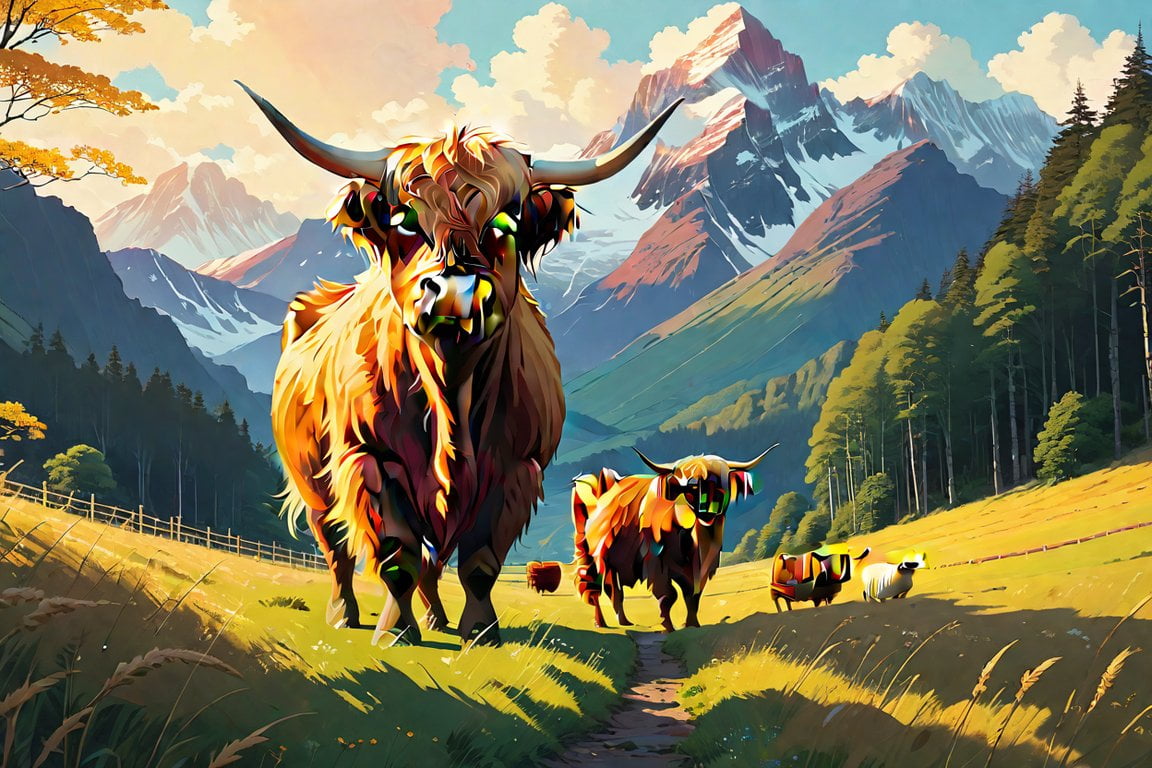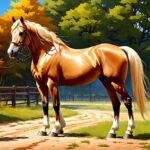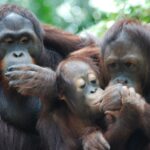Get ready to dive into the captivating world of highland cows as we uncover some fascinating fun facts about these iconic Scottish creatures. In this article, we will delve into the endearing quirks and charming characteristics that make highland cows truly unique. From their distinctive shaggy coats to their gentle temperament, there is so much to discover and admire about these intriguing bovines. So, join us as we embark on a journey to unravel the delightful mysteries of highland cows!
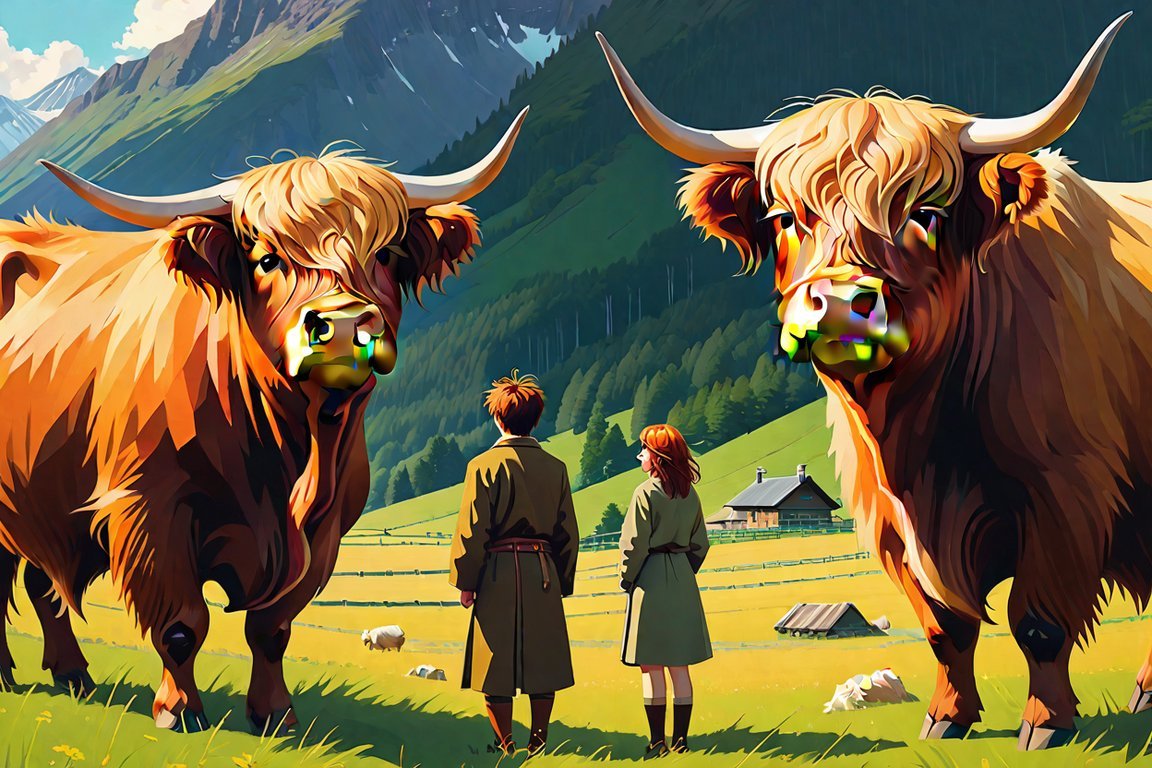
Key Takeaways:
- Highland cows are the oldest registered cattle breed, originating from Scotland [^1^].
- They have a longer life expectancy than traditional cows, living for up to 20 years [^1^].
- Highland cows have a double coat that helps them endure extremely low temperatures [^2^].
- They can travel at around 25 miles per hour [^1^].
- Highland cows are friendly and love human attention [^1^].
- They can produce milk with a high butterfat content, up to 10% [^3^].
- Highland cows are herbivores, eating grass, flowers, plants, and leaves [^5^].
Sources:
- countryandhome.co.uk – “20 Fascinating Facts About The Highland Cow”
- animalsake.com – “Facts You Must Know (But Perhaps Don’t) About Highland Cattle”
Fun Facts About Highland Cows: Discover the Quirks and Charms
When it comes to fascinating animals, highland cows definitely take center stage. These iconic Scottish creatures are not only a delight to see but also have some intriguing quirks and captivating characteristics. Let’s dive into some fun facts about highland cows that will leave you in awe of these magnificent creatures.
The Oldest Registered Cattle Breed
Did you know that highland cows hold the distinguished title of being the oldest registered cattle breed? Originating from Scotland, these cows have been around for centuries, cultivating a rich heritage. Their unique appearance and hardy nature have made them a beloved symbol of the Scottish countryside.
A Race Against Time
Highland cows may not be the fastest animals out there, but don’t underestimate their speed. These incredible creatures can actually travel at around 25 miles per hour! Imagine that – a seemingly gentle bovine running through the fields with surprising agility.
Weathering the Storms
Living in the unpredictable Scottish climate requires some serious adaptability, and highland cows have it mastered. Their defining feature is their long, shaggy coats, which serve as their ultimate defense against harsh weather conditions. This double coat not only provides insulation but also helps them endure extremely low temperatures with ease.
Lifelong Companions
Highland cows are not just stunning to look at; they also have a friendly and affectionate nature. They love human attention and have been known to form deep bonds with their caretakers. Imagine having a loyal and gentle giant by your side – it’s no wonder highland cows have gained a reputation for being incredibly sweet and endearing.
Cream of the Crop
When it comes to dairy, highland cows have a special talent. Not only can they produce milk, but their milk also has a high butterfat content of up to 10%. This creamy delight makes for some delicious treats like butter, cheese, and other dairy products.
Herbivores with a Flair
Highland cows may be herbivores, but they have quite the diverse palate. Their diet consists of grass, flowers, plants, and leaves, which they graze upon to their heart’s content. As they munch away on nature’s offerings, they unknowingly contribute to the preservation and management of various ecosystems.
These fun facts about highland cows are just the tip of the iceberg when it comes to their remarkable qualities. From their ancient lineage and enduring spirit to their affectionate nature and culinary contributions, highland cows are truly a treasure to behold. So, the next time you spot these majestic creatures grazing in the Scottish countryside, take a moment to appreciate their quirks and charms that make them so special.
If you’re curious about South Korea, check out these 10 facts about South Korea. You might be surprised by what you learn! Click here to uncover interesting facts about South Korea.
If you want to know more about Phi Beta Sigma, explore these facts about Phi Beta Sigma. Dive into the history, achievements, and contributions of this remarkable organization! Click here to discover fascinating facts about Phi Beta Sigma.
Highland Cows in Scottish Folklore and Culture
Highland cows, also known as Scottish Highland cattle, are not only fascinating animals but also hold a significant place in Scottish folklore and culture. Let’s delve into the intriguing connection between these iconic creatures and Scotland’s rich heritage.
The Highland Cow: A Symbol of Scotland’s Countryside
Highland cows have become an iconic symbol of Scotland’s countryside, adored for their unique features and gentle nature. These magnificent creatures embody the resilience and beauty of the Scottish landscapes they call home.
The Ancient Breed of the Highlands
Highland cows belong to the Highland breed, which is one of the oldest registered cattle breeds in the world. With their roots deeply embedded in Scotland’s history, these cows reflect the ancient lineage and enduring spirit of the country.
Endearing Quirks and Captivating Characteristics
Highland cows possess a range of quirks and characteristics that make them truly captivating:
- Long-Lasting Presence: These resilient animals have a longer life expectancy compared to traditional cows, living for up to 20 years.
- Gentle Giants: Despite their robust appearance, Highland cows are known for their affectionate nature and love for humans. They enjoy receiving attention and have a reputation for being friendly creatures.
- Swift on Their Feet: Highland cows may not be the fastest animals, but they can surprise you with their impressive speed, traveling at around 25 miles per hour.
- The “Dossan” Effect: The long hair or “bangs” that often cover the eyes of Highland cows have a special name – dossan. These distinctive facial fringes only add to their charm.
Weaving Highland Cows into Scottish Tales
Highland cows have found their way into Scottish folklore, where they become central characters in charming folk tales and legends. These stories often highlight the gentle nature and endearing quirks of these beloved creatures.
Preserving Scottish Heritage
Highland cows play an essential role in preserving Scottish cultural heritage. Their picturesque presence in the countryside contributes to the overall beauty of the landscape and offers a glimpse into the country’s traditional way of life.
Key Takeaways:
- Highland cows, also known as Scottish Highland cattle, symbolize the beauty and resilience of Scotland’s countryside.
- The Highland breed is one of the oldest registered cattle breeds, showcasing the ancient lineage of these animals.
- Highland cows are gentle creatures known for their affectionate nature and love for humans.
- These cows can reach speeds of up to 25 miles per hour, despite their sturdy appearance.
- The charming facial fringes that cover their eyes are referred to as “dossan.”
- Highland cows have become beloved characters in Scottish folklore and tales.
- They play a vital role in preserving Scotland’s cultural heritage and traditional way of life.
Sources:
– Country and Home
– Natural Grown Beef
Highland Cows as Environmentally Friendly Grazers
Highland cows, with their iconic looks and endearing characteristics, serve a vital role as environmentally friendly grazers. These gentle creatures play a crucial part in the preservation and management of various ecosystems. Their unique grazing behavior, coupled with their docile nature, makes them valuable contributors to the environment.
Highland cows are known for their distinctive long, wavy, woolly coats, which help them withstand harsh weather conditions in their native Scotland. But it’s not just their appearance that sets them apart. Devouring up to 70 kilograms of grass every day, these cows are true champions when it comes to conserving their surroundings. They spend about eight hours a day grazing, delicately plucking grass and plants with their tongues instead of nibbling close to the ground. This grazing method ensures that the vegetation is not left too short, promoting healthier growth and preventing the invasion of exotic plant species.
But their contribution doesn’t stop there. Highland cows are experts in treading lightly on the ground, minimizing damage to the environment. With their unique ability to distribute their weight evenly, they prevent soil compaction and reduce the risk of erosion. Their dung acts as a natural fertilizer, enriching the soil and creating a conducive environment for the growth of plants and flowers.
The positive impact of Highland cows as environmentally friendly grazers extends beyond the ecosystem. These versatile animals are primarily raised for their meat, which is lower in cholesterol compared to other forms of beef. On a smaller scale, they can also be milked, producing high-quality milk with a rich butterfat content that is highly valued by consumers and cheesemakers alike.
In conclusion, Highland cows are more than just charming creatures with distinctive physical features. Their role as environmentally friendly grazers is significant and should not be overlooked. From their delicate grazing style to their gentle impact on the landscape, these cows showcase the harmonious relationship between animals and the environment. So, next time you come across a Highland cow, appreciate their contribution as they graze their way to a greener future.
Key Takeaways:
- Highland cows are environmentally friendly grazers, spending eight hours a day delicately plucking at grass and plants with their tongues.
- Their grazing behavior prevents the invasion of exotic plant species and ensures healthier vegetation growth.
- With their ability to distribute weight evenly, Highland cows tread lightly on the ground, minimizing soil compaction and erosion.
- Their dung acts as a natural fertilizer, enriching the soil and promoting plant growth.
- Highland cows are versatile animals, providing low-cholesterol meat and high-quality milk with a rich butterfat content.
Sources:
– Toucan of Scotland – 10 Fun Facts About Highland Cows
– Animalia – Highland Cattle
Highland Cows as Exceptional Mothers
Highland cows, with their majestic appearance and endearing charm, are not only known for their iconic shaggy coats and friendly nature but also for being exceptional mothers. These remarkable creatures exemplify the qualities of a devoted and nurturing parent, ensuring the well-being of their calves from the moment of conception until they grow into independent individuals. Join us on this journey as we explore the unique aspects of highland cows as exceptional mothers.
1. The Maternal Bond
Highland cows possess a profound maternal instinct that is evident in their tender care for their offspring. From the moment a female highland cow becomes pregnant, she invests all her energy in nurturing and protecting her unborn calf. This bond continues to strengthen as she carries her calf for approximately 9 to 10 months, providing everything the growing calf needs to develop.
2. Nutritional Support
During pregnancy, highland cows ensure their calves receive vital nutrients for proper growth and development. Through their herbivorous diet, which consists of grass, flowers, plants, and leaves, highland cows provide a rich source of nourishment that sustains both mother and calf. This diet not only supplies essential nutrients but also aids in the production of high-quality milk, a crucial component of the calf’s diet after birth.
3. Protective Environment
Highland cows create a safe and protective environment for their calves, ensuring their well-being amid the diverse challenges of their natural habitat. Their long, shaggy coats serve as a shield against harsh weather conditions, providing warmth and insulation during cold winters. This protective layer acts as a natural barrier, safeguarding the delicate young calves from external elements and potential predators.
4. Nurturing Guidance
As exceptional mothers, highland cows guide their calves through their early stages of life, teaching them essential skills for survival. From learning how to walk and navigate their surroundings to identifying nutritious vegetation, the mother cow patiently imparts her wisdom to her offspring. Through their nurturing disposition, highland cows help their calves develop the necessary instincts and abilities to thrive in their environment.
5. Unwavering Support
Highland cows offer unwavering support to their calves, ensuring their continued growth and development. The mother cow attentively nurses her calf, providing nourishment and strengthening the bond between them. Her quiet presence and soothing demeanor offer comfort and security to the calf, fostering a sense of trust and well-being. This support extends beyond the nursing stage as highland cows remain by their calves’ side, offering guidance, protection, and affection as they explore their surroundings and gradually become independent.
Key Takeaways:
– Highland cows embody the qualities of exceptional mothers, extending unwavering care and support to their offspring.
– Their profound maternal bond is evident from conception to the growth and independence of their calves.
– Through their herbivorous diet, highland cows provide essential nutrients for the development of their calves.
– Their long, shaggy coats serve as protection against harsh weather conditions, ensuring the well-being of their young.
– Highland cows impart crucial survival skills to their calves, guiding them through their early stages of life.
– The nurturing support and guidance of highland cows strengthen the bond and foster a sense of security between mother and calf.
[Sources: Country and Home – 20 Fascinating Facts About The Highland Cow, Best of Farming – Fun Facts About Highland Cows]
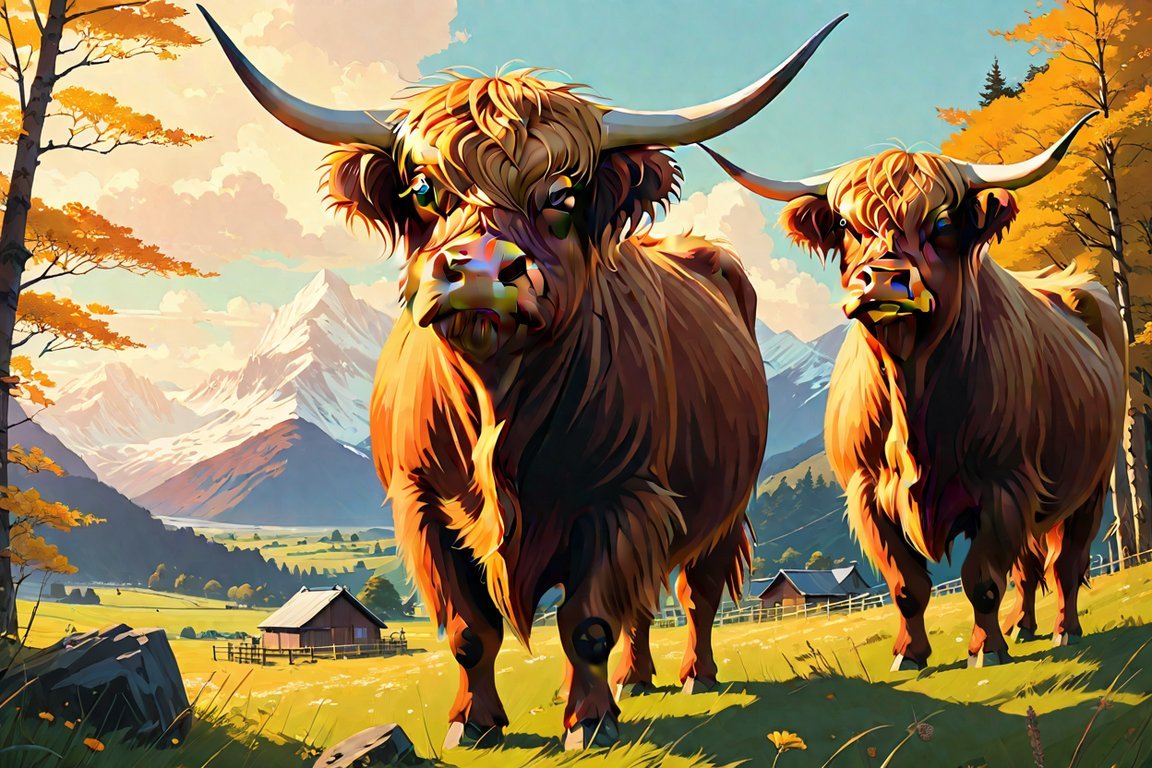
FAQ
Q1: How long do Highland cows typically live?
A1: Highland cows have a longer life expectancy compared to traditional cows, living for up to 20 years.
Q2: How fast can Highland cows travel?
A2: Despite their robust appearance, Highland cows can travel at around 25 miles per hour.
Q3: Are Highland cows friendly towards humans?
A3: Yes, Highland cows are known for their love of humans and enjoy receiving attention.
Q4: How long is the gestation period for Highland cows?
A4: The female Highland cow carries her calf for around 9 to 10 months before giving birth.
Q5: What do Highland cows eat?
A5: Highland cows are herbivores, primarily eating grass, flowers, plants, and leaves.
- Epic Video Game Trivia: A History From Pong to Present - April 24, 2025
- Master Patterns of Power: Transform Grammar Teaching Now - April 24, 2025
- Unlock Filipino Culture: A Deep Dive into Traditions and Practices - April 23, 2025
